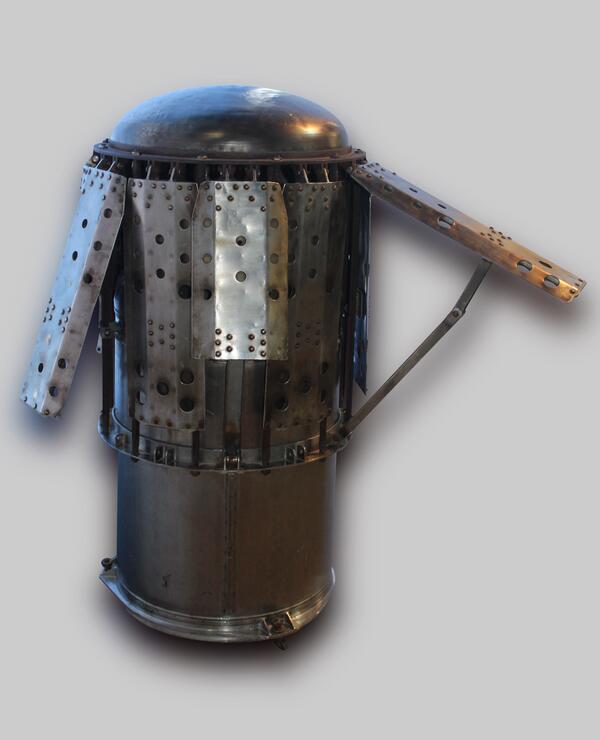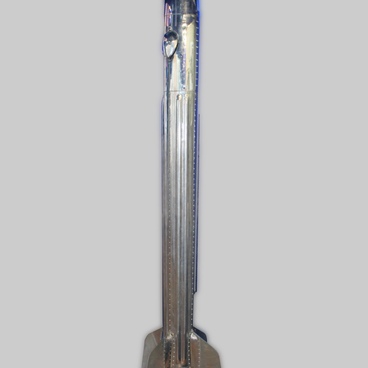A geophysical missile is an unmanned missile designed for sub-orbital flight. Its structure includes one or more acceleration units and an instrument container or a biocontainer.
Launches of geophysical rockets paved the way for the study of outer space and laid the foundations for the launch of the first artificial satellite of the Earth and the first spacecraft with a human on board. They were used to conduct geophysical, physical, astrophysical, chemical and biomedical studies of the Earth’s upper atmosphere and nearby space. Geophysical rockets also launched animals into space: dogs, rabbits, mice, rats - who had their pulse, blood pressure, respiration, electrocardiogram measured during flight.
The parachute compartment presented in the exposition is a component of a geophysical automaton container that examines the properties of the upper atmosphere. It consists of three interconnected cylindrical compartments: a nose sealed with instruments for studying the properties of the atmosphere; a central air sampling unit; and a parachute one with sealing.
The rocket takes the automaton container to an altitude of 200 kilometres or more. Then it is ejected from the rocket and moves away from it. This makes it possible to carry out various studies in the upper atmosphere and in a relatively undisturbed environment.
Then the container gradually descends down with a parachute. Meanwhile, scientific instruments are used to measure pressure at altitudes of 70-200 kilometres, to take air samples at altitudes of 110-115 kilometres, to study micrometeors, to photograph the Earth’s surface and clouds.
The parachute compartment itself consists of a flat metal base in the form of a disc attached to the central compartment and a metal cap which is hermetically secured to the disc. A folded parachute, the shroud lines of which are fastened in the centre of the disc, is placed under the cap.
Launches of geophysical rockets paved the way for the study of outer space and laid the foundations for the launch of the first artificial satellite of the Earth and the first spacecraft with a human on board. They were used to conduct geophysical, physical, astrophysical, chemical and biomedical studies of the Earth’s upper atmosphere and nearby space. Geophysical rockets also launched animals into space: dogs, rabbits, mice, rats - who had their pulse, blood pressure, respiration, electrocardiogram measured during flight.
The parachute compartment presented in the exposition is a component of a geophysical automaton container that examines the properties of the upper atmosphere. It consists of three interconnected cylindrical compartments: a nose sealed with instruments for studying the properties of the atmosphere; a central air sampling unit; and a parachute one with sealing.
The rocket takes the automaton container to an altitude of 200 kilometres or more. Then it is ejected from the rocket and moves away from it. This makes it possible to carry out various studies in the upper atmosphere and in a relatively undisturbed environment.
Then the container gradually descends down with a parachute. Meanwhile, scientific instruments are used to measure pressure at altitudes of 70-200 kilometres, to take air samples at altitudes of 110-115 kilometres, to study micrometeors, to photograph the Earth’s surface and clouds.
The parachute compartment itself consists of a flat metal base in the form of a disc attached to the central compartment and a metal cap which is hermetically secured to the disc. A folded parachute, the shroud lines of which are fastened in the centre of the disc, is placed under the cap.



